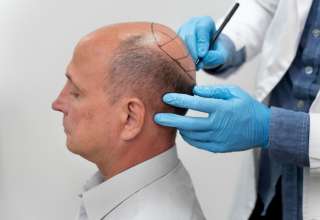It’s true what they say – as people get older, they experience aches and pains in places they never even knew existed, such as at the back of the knee or the upper part of the abdomen! Getting older isn’t a fun process at all, but it is inevitable – so we may as well make the most of it and address certain ailments or conditions with the right changes in diet, lifestyle, or both. But there may be certain conditions that your body may have that can’t easily be cured just by changing your diet or lifestyle – and one of these conditions is gallstones. The gallbladder can develop gallstones, which are more common as we become older. So, what can you do if you suspect you have gallstones and would like to know how you can treat them or get rid of them? What are the most common treatments for gallstones? Here’s a look at your options.
What are they?
First of all, what are they? Gallstones are small, dense, solid deposits in a person’s gallbladder. These stones can cause an array of symptoms, from mild pain to severe cramps in the abdomen, nausea, and vomiting. Luckily, you can take advantage of several treatments, including surgery, medication, and changes in lifestyle.
Medication
Your doctor might recommend medicine to dissolve tiny gallstones if you don’t have any symptoms. The most commonly prescribed medication is ursodeoxycholic acid (UDCA), which can dissolve some types of gallstones over time. But as experts in gallstones in London such as The London Surgical Group know, this treatment can take several months, and not all gallstones can be dissolved with medication.

Changes in lifestyle
According to the same experts in gallstone surgery London, making changes in your lifestyle can help prevent gallstones – and reduce the risk of complications. These changes include eating a healthy diet (one that’s low in fat and high in fibre), losing weight, exercising regularly, and drinking plenty of water to stay hydrated.
Endoscopic retrograde cholangiopancreatography
ERCP is a procedure that’s minimally invasive, combining endoscopy and X-ray imaging to examine the bile ducts and remove the gallstones. During the procedure, a thin, flexible tube with a camera on one end is passed through the mouth and into the small intestine, and then you are injected with a dye into the bile ducts, which makes them visible on X-ray. The specialist can then use tools to remove any gallstones.
Laparoscopic cholecystectomy
On the other hand, if you suffer from symptomatic gallstones, your surgeon may recommend laparoscopic cholecystectomy. It is a surgical procedure that is also minimally invasive, and it involves removing your gallbladder. Your abdomen is incised lightly by the surgeon, and one of the incisions is used to introduce a laparoscope. They can then view the gallbladder and remove it through one of the other incisions. This method heals more quickly than open surgery and is typically performed under general anaesthesia.
Open cholecystectomy
Rarely, a patient may require an open cholecystectomy, which entails creating a significant abdominal incision to gain access to the gallbladder. Open cholecystectomy, however more intrusive than laparoscopy, can be required if there are difficulties or if you’ve had prior abdominal surgery.










